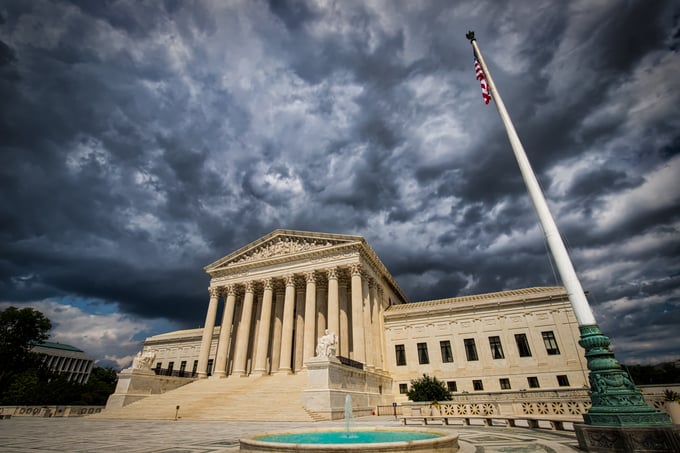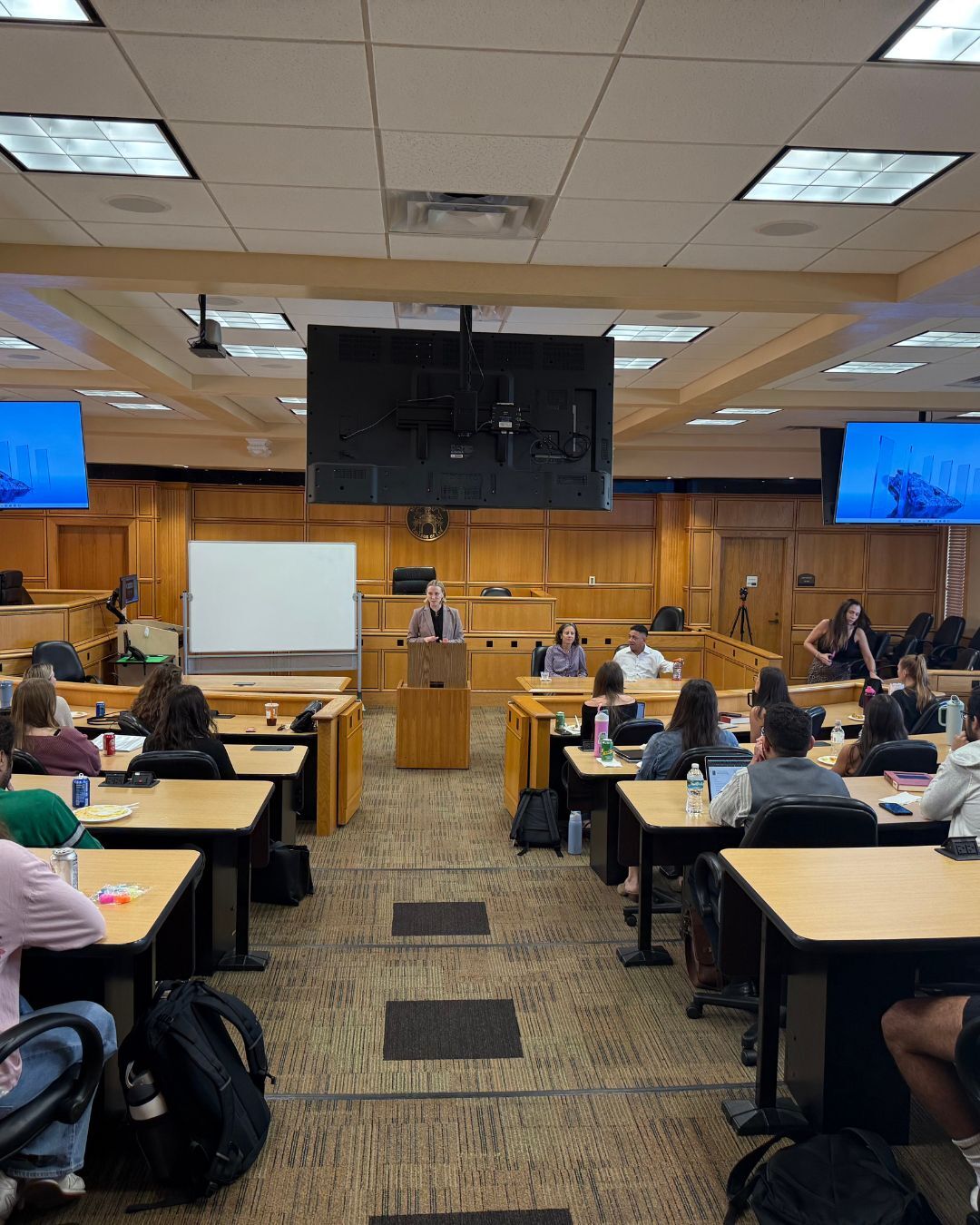 In a landmark decision that still has experts scrambling to determine ramifications, the Supreme Court issued a ruling at the end of June deciding that universities are no longer allowed to take race into account as part of the admissions process. The ruling overturns 50 years of precedent from the court that had established the legality of affirmative action — that is, the use of policies and practices by institutions aimed at including students of color and other members of groups who have historically faced discrimination.
In a landmark decision that still has experts scrambling to determine ramifications, the Supreme Court issued a ruling at the end of June deciding that universities are no longer allowed to take race into account as part of the admissions process. The ruling overturns 50 years of precedent from the court that had established the legality of affirmative action — that is, the use of policies and practices by institutions aimed at including students of color and other members of groups who have historically faced discrimination.
The ruling stems from two cases: Students for Fair Admissions vs. President and Fellows of Harvard College and Students for Fair Admissions v. University of North Carolina. Unlike some other cases this term that saw majorities cut across the court’s political divisions, the decision in the affirmative action cases was decided by a six-person majority comprised of the court’s conservative justices, John Roberts, Clarence Thomas, Samuel Alito, Brett Kavanaugh, Neil Gorsuch, and Amy Coney Barrett. The court’s liberal justices, Sonia Sotomayor, Elena Kagan, and Ketanji Brown Jackson, were in the dissent. (Jackson recused herself from the Harvard case because she served as a member of the university’s Board of Overseers while the case was ongoing prior to her appointment to the court in 2022.)
We’ll take a look at the history of affirmative action in higher education, the new decision, and how it’s likely to shape university admissions in the future.
Quotas and Precedents in the Bakke Case
The first Supreme Court decision to establish the constitutionality of affirmative action was Regents of the University of California v. Bakke in 1978, but in so doing it also rejected a particular form of race-related admissions policy that had been prevalent prior to the decision.
Allan Bakke, a white applicant to the Medical School of the University of California at Davis, sued after he was rejected twice, claiming that the school’s policy of reserving a set number of spots for minority students (16 out of 100 at the time) violated the Fourteenth Amendment’s equal protection clause.
In a 5-4 decision, the court ruled that the use of racial quotas in university admissions was, in the words of Justice Lewis Powell writing for the majority, "odious to a free people whose institutions are founded upon the doctrine of equality" and a violation of the Fourteenth Amendment.
However, the court also determined that the state had a “legitimate and substantial interest” in eliminating the effects of discrimination. “[T]he attainment of a diverse student body… clearly is a constitutionally permissible goal,” Powell wrote. "[R]ace or ethnic background may be deemed a 'plus' in a particular applicant's file" so long as it was considered as one among many relevant factors in an individual’s application.
Gratz v. Bollinger and Grutter v. Bollinger
Gratz v. Bollinger and Grutter v. Bollinger were a pair of decisions in 2003 that, similar to the Bakke case, narrowly upheld the constitutionality of race-conscious admissions while simultaneously rejecting a particular instance of it. The court determined that this instance was too strictly quantified and insufficiently tailored to individual student applications.
At the time, the University of Michigan granted admission to undergraduates who scored over 100 points on a 150-point scale, and the admissions department awarded 20 points to students from underrepresented minority groups. In a 6-3 decision written by then-Chief Justice William Rehnquist, the court ruled that this policy was a violation of the Equal Protection clause because it made "race a decisive factor for virtually every minimally qualified underrepresented minority applicant."
However, a simultaneous 5-4 decision written by Justice Sandra Day O’Connor upheld the constitutionality of the University of Michigan’s law school admissions policy on the grounds that its consideration of race was “narrowly tailored” to individual students’ applications.
Writing for the majority in Grutter v. Bollinger, O’Connor wrote that “student body diversity is a compelling state interest that can justify the use of race in university admissions,” but she suggested that that interest could have an expiration date. As affirmative action policies have their desired effect, and student bodies across the country become more racially diverse, O’Connor suggested that in 25 years “the use of racial preferences will no longer be necessary to further the [state’s] interest.”
This line of thinking is similar to one cited in Shelby County v. Holder, the 2013 Supreme Court decision that overturned key provisions from the Voting Rights Act of 1965. The VRA established that certain states and counties with a history of voter discrimination were required to receive pre-clearance from the federal government before making any changes to election laws or procedures.
In 2013, the court struck down Section 4 of the act, which contains the formula that was used to identify which state and local governments were required to obtain preclearance — effectively ending the requirement until Congress determines a new formula. The court didn’t rule that preclearance was unconstitutional — just that the formula for determining which districts it applied to had been rendered irrelevant after over forty years of the policy’s implementation.
“Coverage today is based on decades-old data and eradicated practices,” wrote Chief Justice John Roberts in the majority opinion. While there “was compelling evidence justifying the preclearance remedy and the coverage formula” in 1965 when the Voting Rights Act was passed, Roberts said that the lack of strong disparities in voter registration and turnout in those districts today was grounds for ruling that the formula had outlived its usefulness.
In a famous line from her dissent, Justice Ruth Bader Ginsburg, writing for the minority, wrote that “throwing out preclearance when it has worked and is continuing to work… is like throwing away your umbrella in a rainstorm because you are not getting wet.”
The argument about affirmative action in higher education has proceeded along similar lines: student bodies are generally far more diverse in 2023 than they were in the 1960s before schools began to adopt affirmative action policies, but does that mean that the policies are no longer necessary or rather that they’ve been working as intended? What effect will it have on admissions and enrollment for students of color at institutions across the country if universities are expressly forbidden from considering race as a relevant factor in admissions?
The Supreme Court’s Latest Cases and the Future of Affirmative Action
This was one of the points brought up by Chief Justice Roberts in the decision on Students for Fair Admissions v. President and Fellows of Harvard College — namely, that Harvard and UNC’s affirmative action policies don’t have a “logical end point” obviating their necessity.
Roberts, who famously said that “the way to stop discrimination on the basis of race is to stop discriminating on the basis of race” in a 2007 school busing case, wrote the opinion for the majority in the new case. His decision states that Harvard and UNC’s programs “cannot be reconciled with the guarantees of the Equal Protection Clause” because they “lack sufficiently focused and measurable objectives warranting the use of race, unavoidably employ race in a negative manner, involve racial stereotyping, and lack meaningful end points.”
However, the decision leaves open the possibility that schools can continue to consider “an applicant’s discussion of how race affected his or her life, be it through discrimination, inspiration, or otherwise.” However, he wrote that a “benefit to a student who overcame racial discrimination, for example, must be tied to that student’s courage and determination… [or] tied to that student’s unique ability to contribute to the university.”
“I think the federal courts have just kicked open the door to all sorts of challenges,” says Professor Peter Lake of Stetson Law in the latest Real Cases podcast. “Depending on where you live, what happened [in the new case] could be monumental or marginal in terms of immediate impact — and I say ‘marginal’ in a legal sense, in the sense that it’s business as usual at a lot of places.”
That’s because, Lake says, “a lot of places have moved past race-conscious admission. In other words, they’re not doing what [Grutter v. Bollinger] allowed them to do. You see it at a lot of the so-called selective institutions, mostly private. Even [the University of] North Carolina’s changed its position since the case was filed.”
Diversity at Stetson
Stetson University College of Law has a uniquely diverse student population. In fact, in 2016 we were identified as one of the Top 20 most diverse law schools in the nation, according to PreLaw Magazine. 28% of our students self-identify as racially or ethnically diverse, and Stetson is home to well-established organizations representing Black, Asian-American, Hispanic, and LGBTQIA+ students. We’re also members of the Florida Law Schools’ Consortium for Racial Justice (FLSCRJ).
Learn More on Real Cases, the Stetson Law Podcast
In the latest episode of Real Cases, we sit down with Professor Peter Lake, an internationally recognized expert on higher education law and policy, to discuss the future of race conscious admissions at American universities and why he thinks the court’s recent decision is “litigation bait” for many more cases to come.
Topics: Real Cases Podcast
.jpg)

